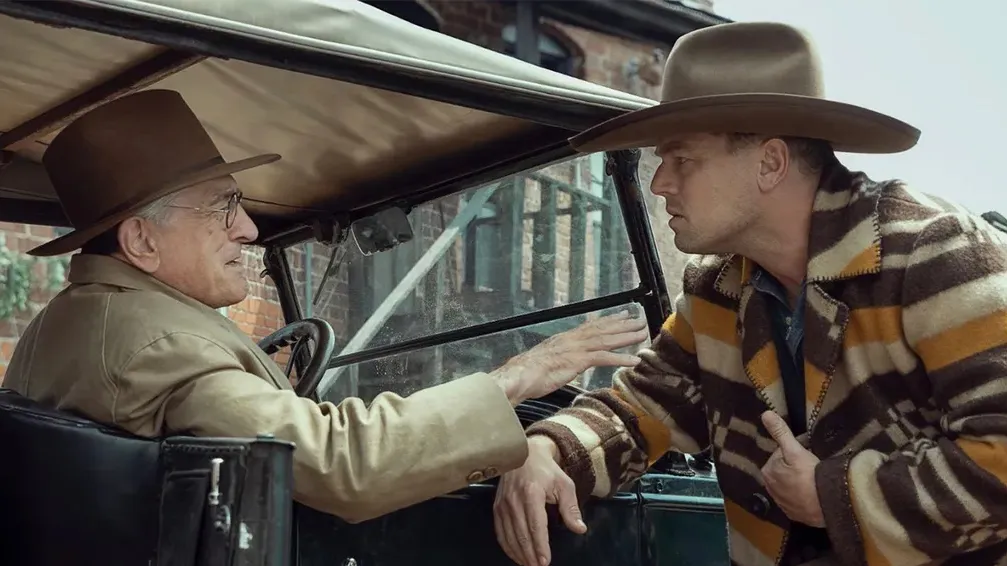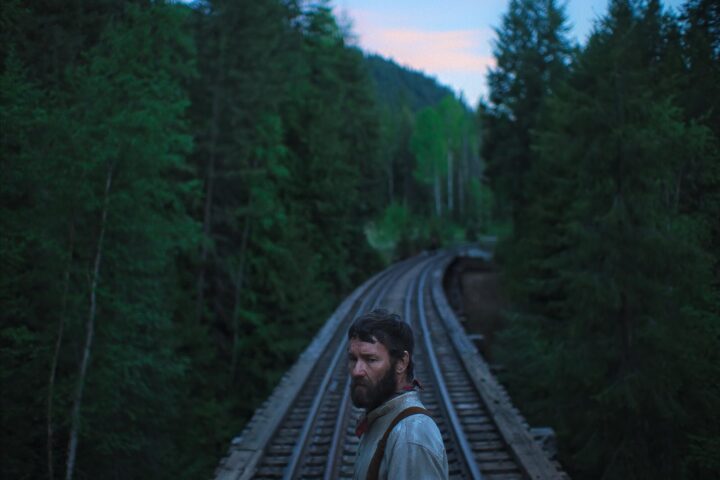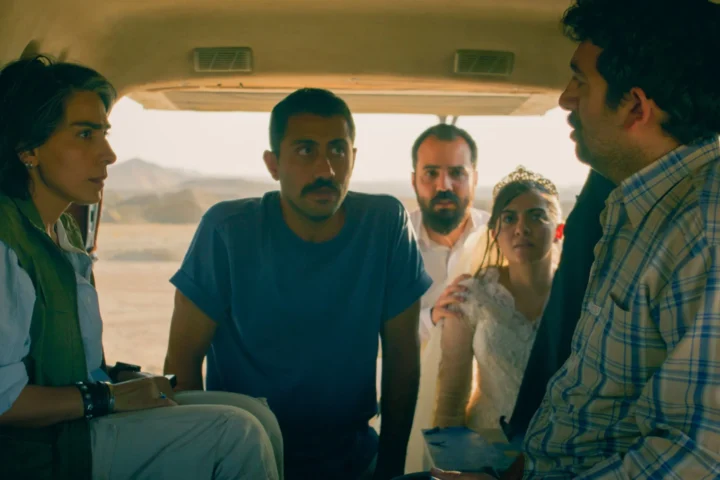In the 206-minute opus that is Martin Scorsese’s Killers of the Flower Moon, the octogenarian maestro returns, exacting as ever, to his enduring six-decade career of thematically rich and technically complex canvases. In a picture about whether love and avarice can ever coexist, Scorsese brings his signature artistry to an often thrilling large scale movie with moments of unexpected intimacy, a morality play filled with exploiters and their prey, valiant good guys, treacherous bad guys and writ large American history.
In his adaptation of David Grann’s 2017 nonfiction book Killers of the Flower Moon: The Osage Murders and the Birth of the FBI, an exposé of the Osage killings during the early 1920s and the nascent stages of the Federal Bureau of Investigation, Scorsese, who penned the screenplay with Eric Roth, delivers a sweeping drama superbly navigating a labyrinth of ethics, transgression and retribution against a backdrop of heartland greed and both loving and nefarious family ties.
In telling this story of Native American genocide driven by wealth envy and upper hand whiteness, Scorsese drops us directly into Oklahoma circa 1920s, a hotbed of new money for the Osage, whose land sits directly atop oil-rich soil. This land belongs to the Osage by law, many of whom have become quite wealthy, flaunting furs, fancy cars and affluence about town. But a scheming cabal of local white men, including the “friend to the Osage” William “King” Hale (a sensational Robert DeNiro), a flush cattle ranch owner and local luminary, means all manner of ingratiating maneuvers, from poor white men desperately looking to marry into monied Osage family lines to outright murder.
In a shrewd move, Scorsese has enlisted the talents of his frequent collaborator, Leonard DiCaprio, to embody an ambivalent character of little intelligence but remarkable complexity. DiCaprio’s electrifying portrayal—surely one of his best—enlivens a simpleton of frightening moral opacity, one whose limitations make him an useful idiot in a long-game plot to wrest control of oil and wealth from a doomed Osage family.
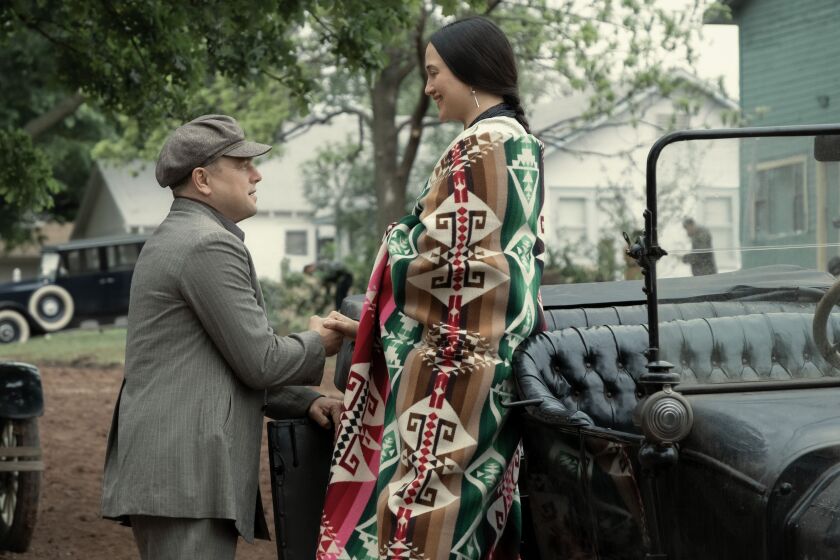
DiCaprio is Hale’s nephew, former war cook Ernest Burkhart (DiCaprio), returning injured and in pursuit of three aims—women, whisky and his greatest love, money. The pair conspires that Ernest will befriend a local Osage woman, Mollie Kyle (Lily Gladstone), by becoming her frequent driver, curry her favor and ultimately penetrate the family fortune. Savvy Mollie recognizes her suitor’s craven opportunism but falls for him anyway. But where does the truth lie? DiCaprio and Gladstone navigate this thorny terrain with genuine onscreen connection through humor and tenderness, sharing romance in small moments, such when they cuddle together in bed or speak together Osage Nation Language.
The passage of years brings both the birth of Burkhart children and much death, a troubling pattern emerging as numerous untimely Osage deaths are consistently swept under the rug, dismissed without thorough medical examinations or “no investigation.” Mollie, bearing the burden of severe diabetes and the painful extermination of her entire family, experiences a gradual erosion of her health. Gladstone conveys profound grief and, in Mollie’s clearly astute observations, unyielding composure. Yet terrific as she is, there are moments when we wish for Mollie to assume a more proactive role.
Scorsese’s vivid storytelling leaves no room for doubt regarding the figures orchestrating the ever-deepening conspiracy. Across this lengthy picture, it is not a matter of “if,” but “when” this web of theft and murder will finally unravel. Throughout, both the sharpness of the filmmaking and professionalism of the cast keep us deeply invested.
Killers of the Flower Moon is not without a few issues, particularly its efforts to maintain a consistent narrative perspective, a dilemma that somewhat diminishes the resonance of Mollie’s compelling personal story, so well portrayed by the measured, deeply penetrating Gladstone, who brings gravitas to every glance, gesture and reaction in a performance of immense emotional wellsprings, always withheld but each flicker of passion and tragedy fully readable across her marvelous face. During the second half of the film, Mollie’s character is marginalized to a state of drug-induced near-catatonia, thereby dulling the impact of her family plight and the broader Osage tragedies.
Instead, the picture’s third act emphasizes the FBI investigation, led by the always dependable Jesse Plemons as lead agent Tom White, sent by Washington as a hammer of justice. The unfolding conflicts between the fist of federal government and small town corruption, diabolical uncle and malleable nephew and the courtroom maneuverings aimed at achieving justice (wherein a pair of prominent cameos from John Lithgow and Brendan Fraser seem arbitrary) are undeniably pivotal to plot resolution and historical record. They also inadvertently backseat the film’s most crucial Native American figure.
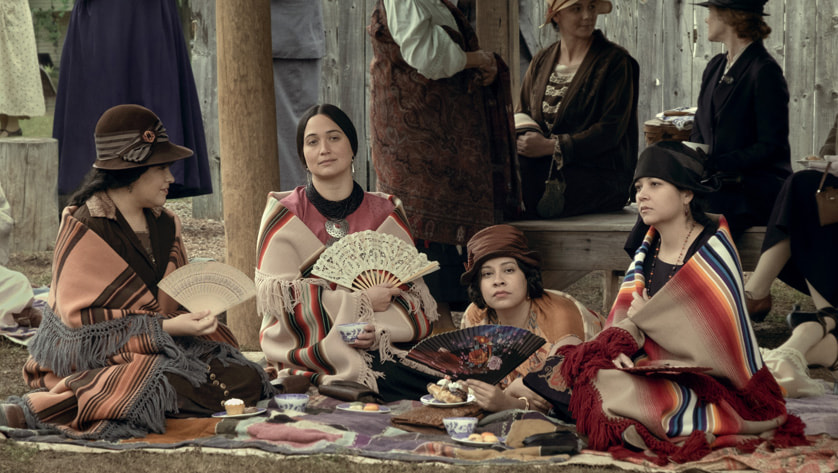
Reportedly, last-minute adjustments to the screenplay’s point of view led to DiCaprio swapping roles with Plemons, prompting a shift in the film’s focal point. As Gladstone hinted in early press, the perspective of the FBI was reduced in favor of a more pronounced Osage viewpoint, a welcome change that she skillfully navigates onscreen and one corroborated by Scorsese in a serious of recent admonitions to reconfiguring the story’s focus (“I was making a movie about a bunch of white guys—and it concerned me”) to its proper Native American context.
Even so, we wish for a deeper exploration of Mollie’s character as the film takes a different course, favoring a near-singular late focus on DiCaprio’s Ernest, who oscillates between malevolence, compartmentalization of his actions while clearly caring for his wife, or exploited himself, morally adrift and struggling to distinguish right from wrong. It seems evident that the character’s intellect cannot adequately accommodate such complexities. This is both vexing and intriguing.
As the film’s focus pivots towards DiCaprio’s galvanic star power, Scorsese gambles on audience identification with the character’s morally ambiguous nature. Even as Ernest undergoes apparent final act evolution, he remains somewhat of a cipher right to a climactic exchange with his long-suffering spouse, where a simple and direct rhetorical question seals his marital fate.
Scorsese’s top level artistic collaborators here include DP Rodrigo Prieto (who lensed the filmmaker’s contemplative 2016 Silence), who masterfully captures the film’s juxtaposition of heartland grandeur and the delicate nuances of intimate moments. Adding texture is the late musician Robbie Robertson, delivering a pulsating score and swan song to his legendary career. Longtime Scorsese editor Thelma Schoonmaker paces the film’s extensive running time to be swiftly engrossing.
Scorsese closes his film on a coda that, while clever, is a conceptual curio, albeit one that packs an unexpected wallop in its revisionist epilogue. Throughout, DiCaprio, DeNiro and Gladstone are an absorbing trio of ace-level performers holding the screen with command. Killers of the Flower Moon offers rich reflection on a shameful chapter of our American past. Scorsese, with signature mastery, transforms infamy into a compelling entertainment.
3 1/2 stars
